Poecilobdallus formosus
The Reduviidae, or Assassin Bugs, are a large family of the order Hemiptera (true bugs), consisting of about 7000 species. Almost all of these are terrestrial ambush predators, using their powerful, curved proboscis to puncture and kill other insects and invertebrates. Some, such as the Chagas disease carrying Rhodnius prolixus, are blood-suckers. Many species have elongate heads and legs, which allow them to attack and subdue prey from a distance.
Morphology
Reduviids are distinguished from other true bugs by their thick, curved proboscis, or rostrum, the tip of which rests in a shallow longitudinal groove onteh sternum.
Evolution
The Harpactorinae is the largest and most diverse subfamily of Reduviidae.
Behaviour
Individuals are often found sitting atop the flowers of shrubs, waiting to ambush pollinating insects.
Method of reproduction
Sexual
Habitat
Terrestrial
Distribution
Arid northern Western Australia, arid Northern Territory and coastal and inland Queensland.
Life Cycle
As with other true bugs, reduviids have incomplete metamorphosis: upon hatching from their egg they go through several nymphal stages, each progressively larger and more developed than the next. In the final stage they moult into the adult, which is distinguished from the nymphs by the presence of fully developed wings (except in micropterous or apterous morphs).
| Kingdom: | Animalia |
|---|---|
| Phylum: | Arthropoda |
| Subphylum: | Hexapoda |
| Class: | Insecta |
| Order: | Hemiptera |
| Superfamily: | Reduvioidea |
| Family: | Rediviidae |
| Subfamily: | Harpactorinae |
| Genus: | Poecilobdallus |
| Species: | formosus |
| Name Published Year: | 1859 |
|---|---|
| Rank: | species |
| Scientific Name Authorship: | Stål |
| Commercial Impact: | None |
Cite this page
Western Australian Museum Collections https://museum.wa.gov.au/online-collections/names/poecilobdallus-formosus
Accessed 21 Dec 2025
Rights
We support the open release of data and information about our collections.
Text content on this page is licensed under a Creative Commons Attribution 4.0 International License.
Image content on this page is copyright WA Museum.


